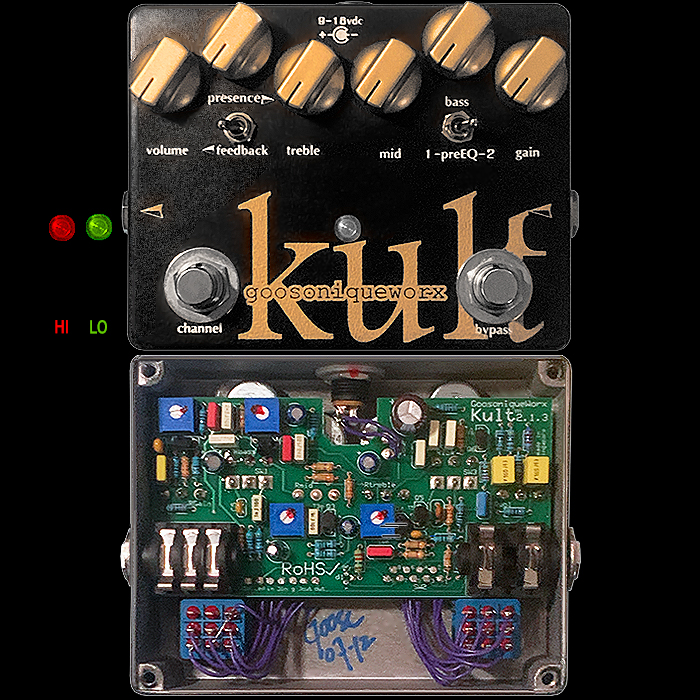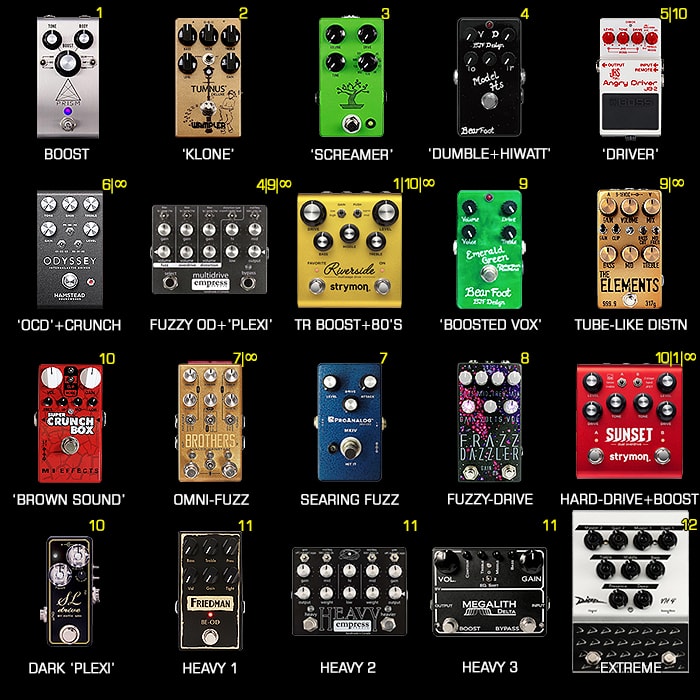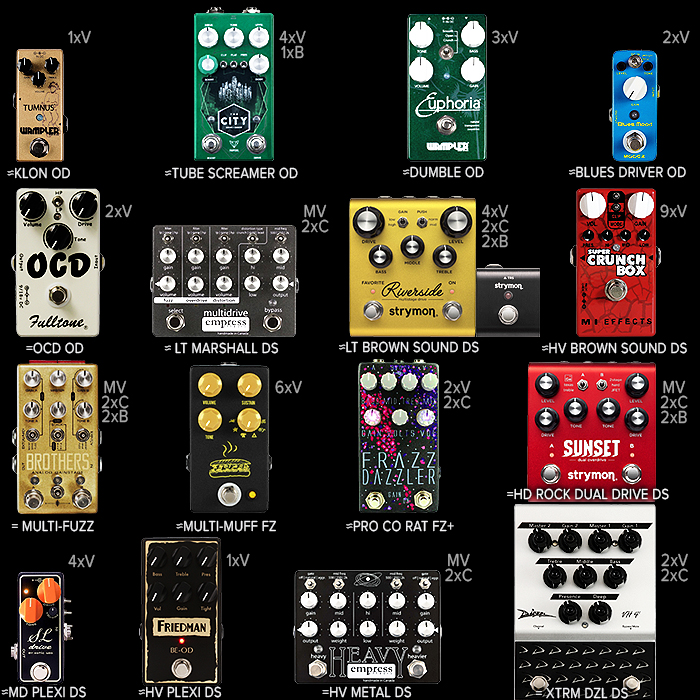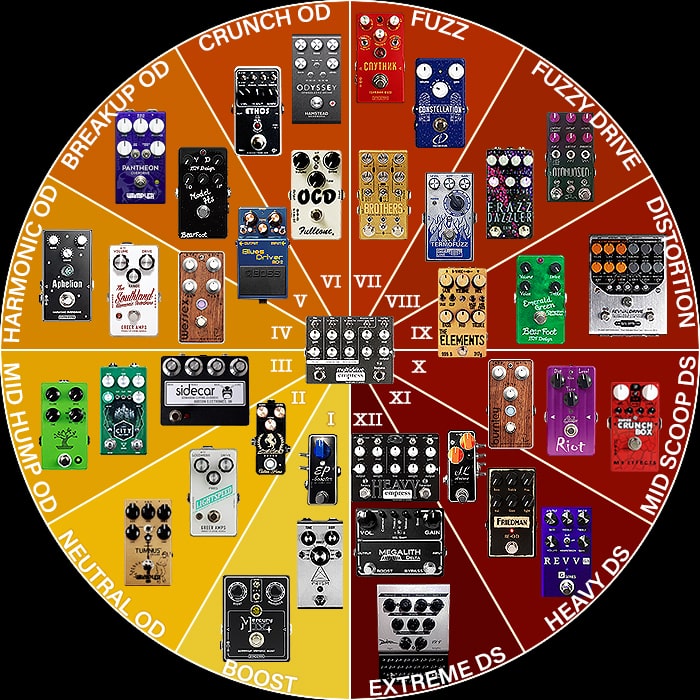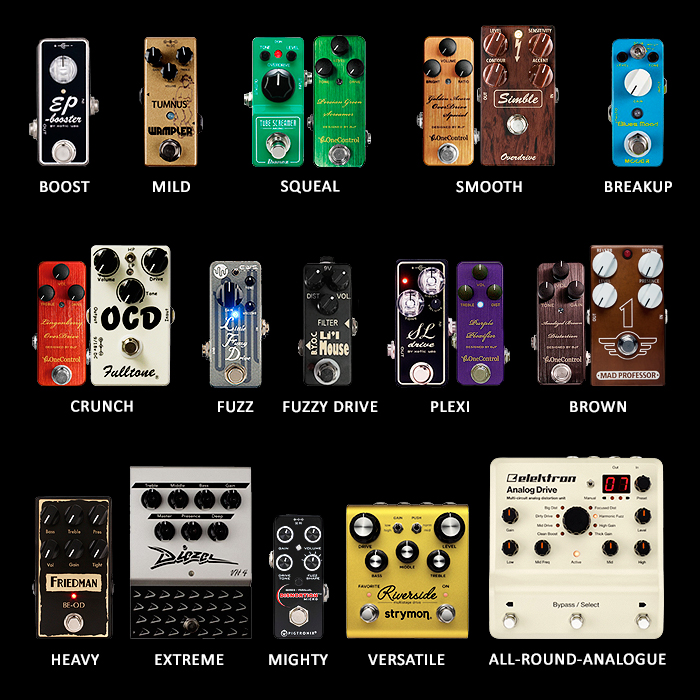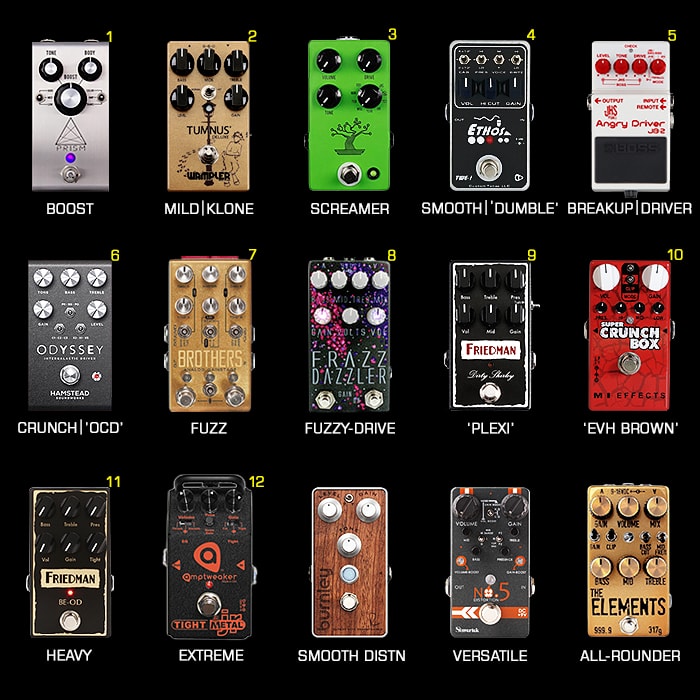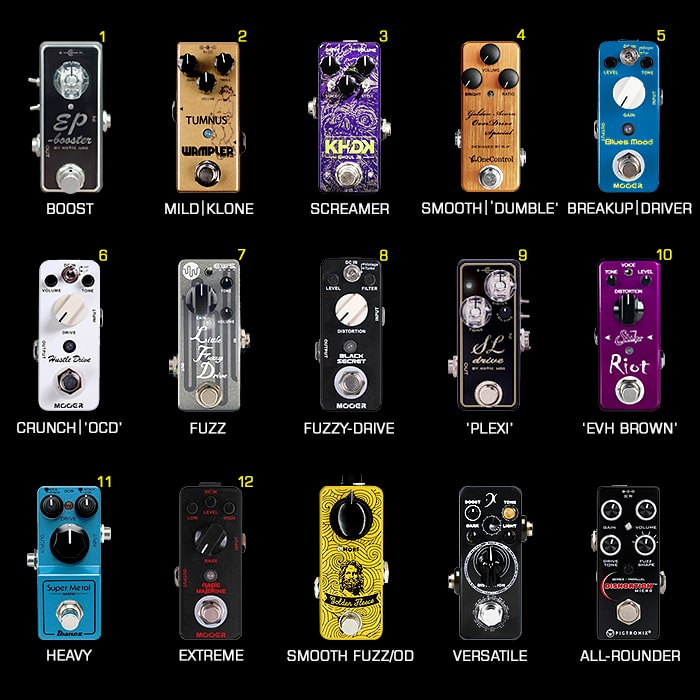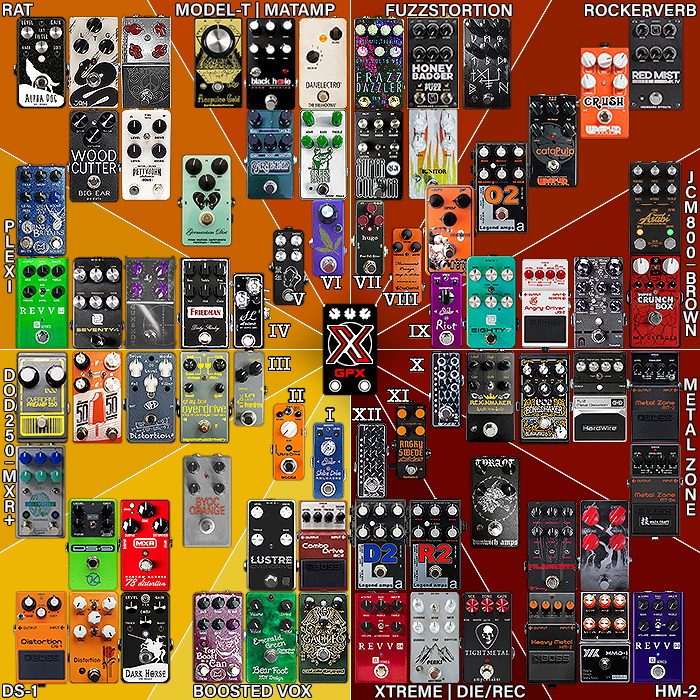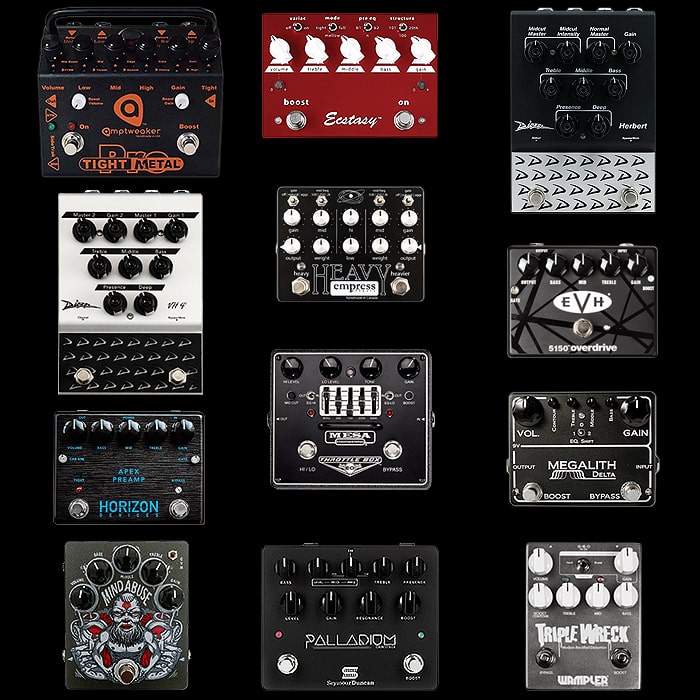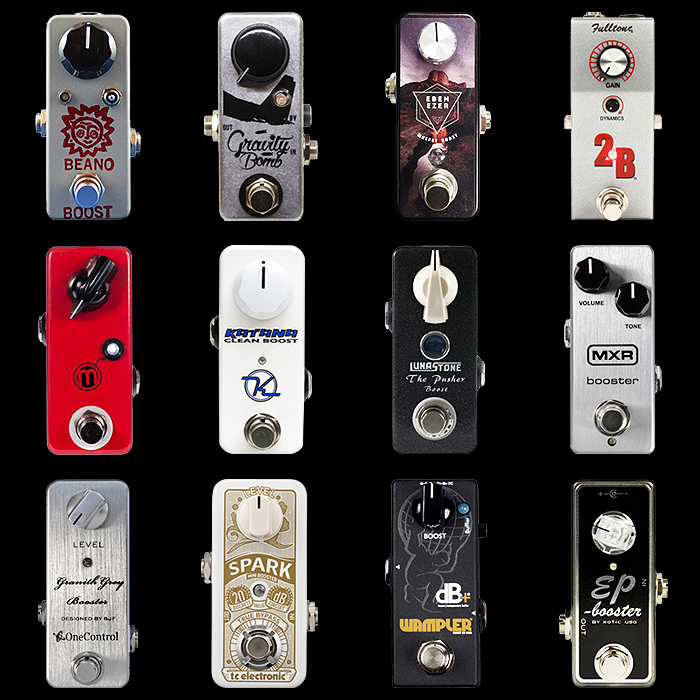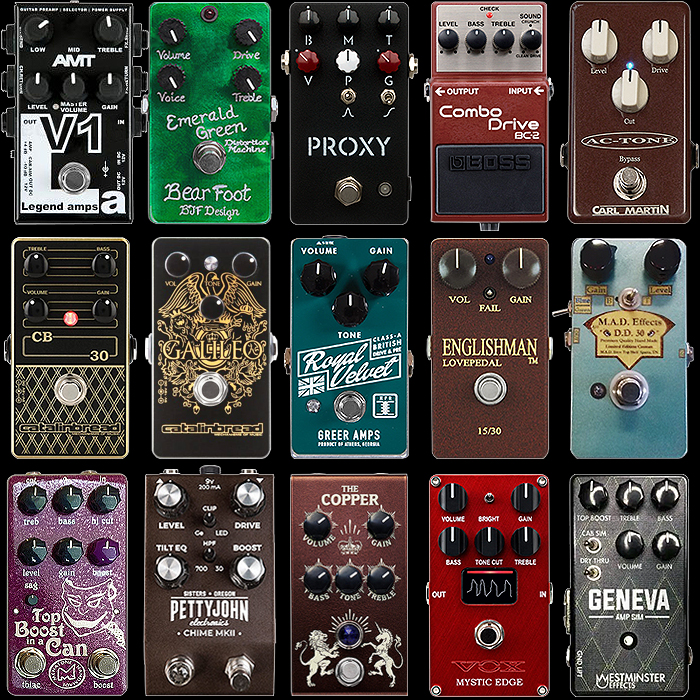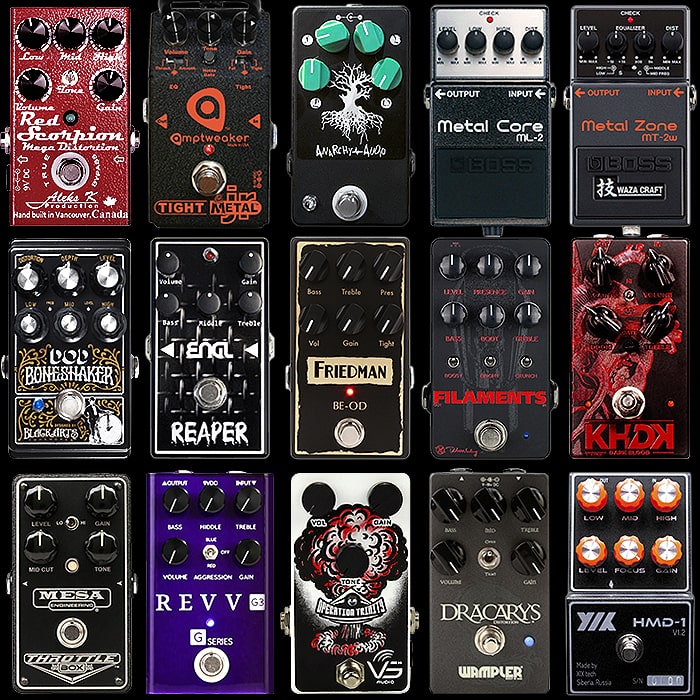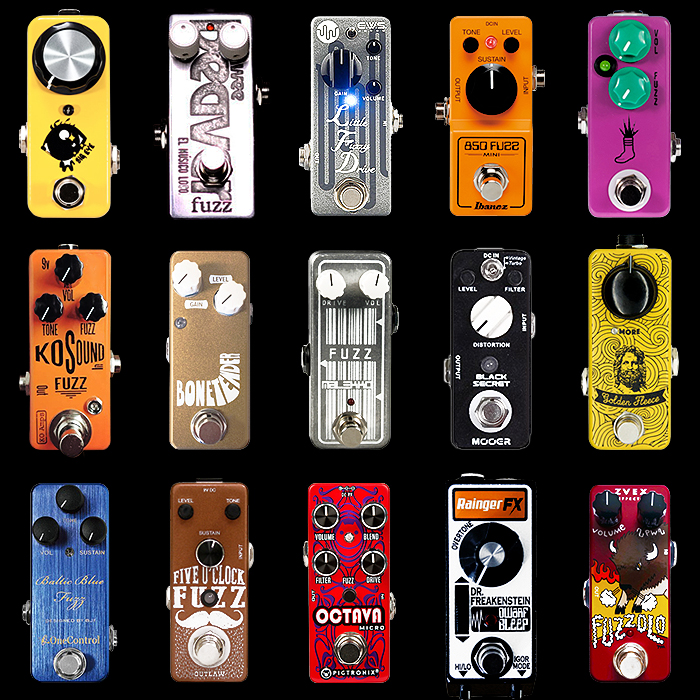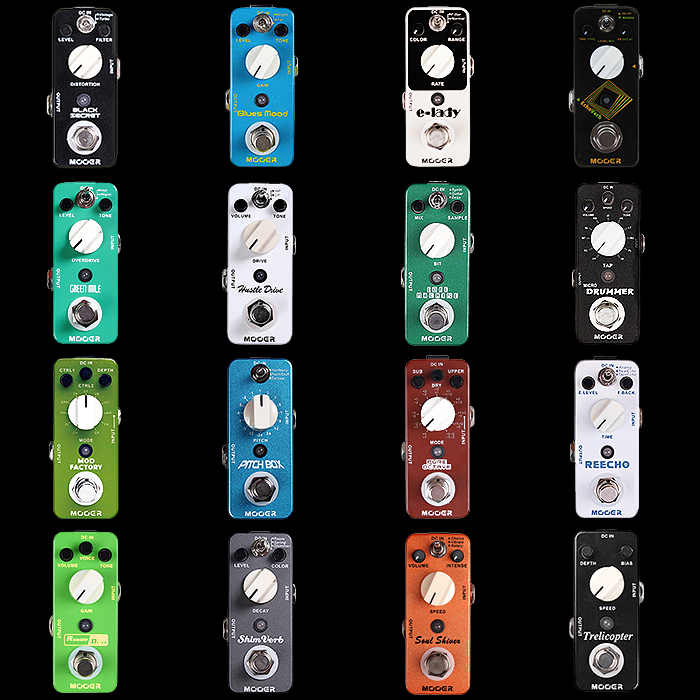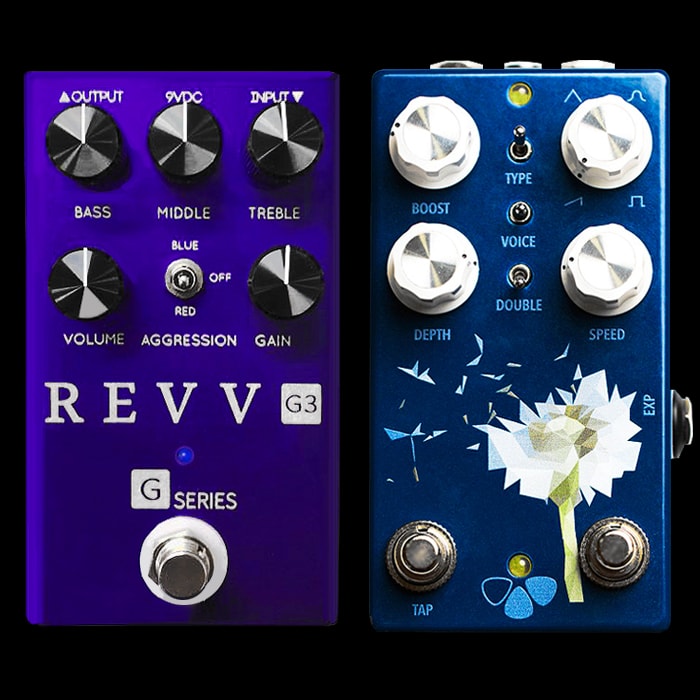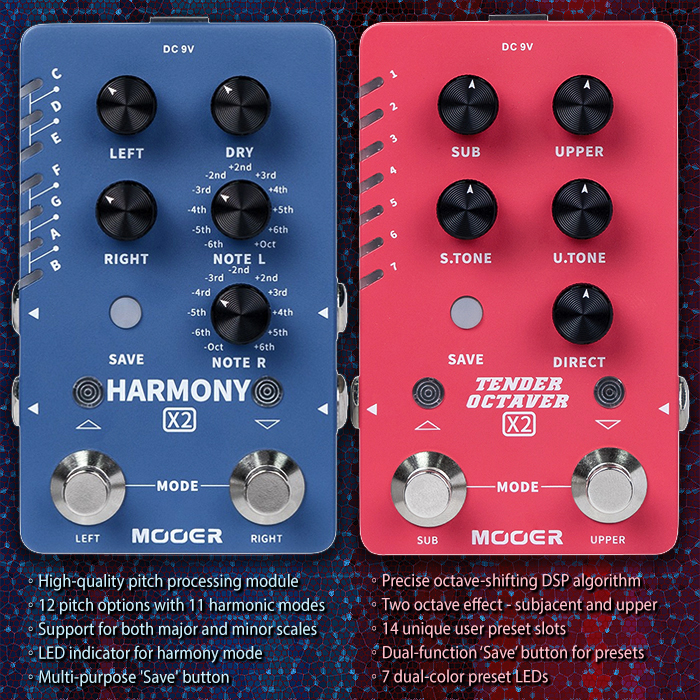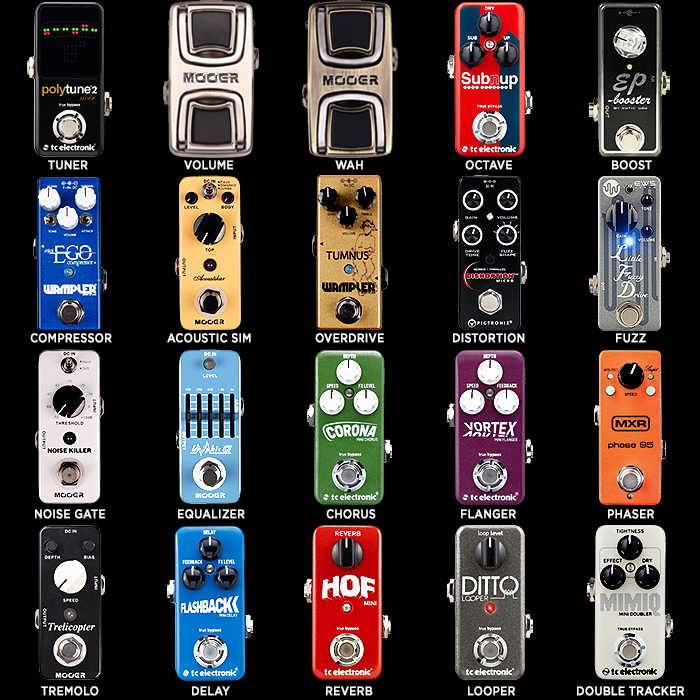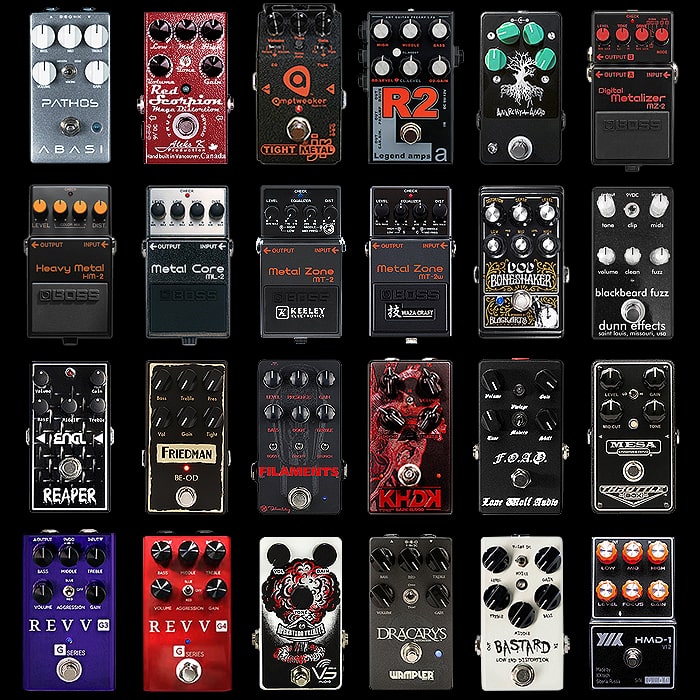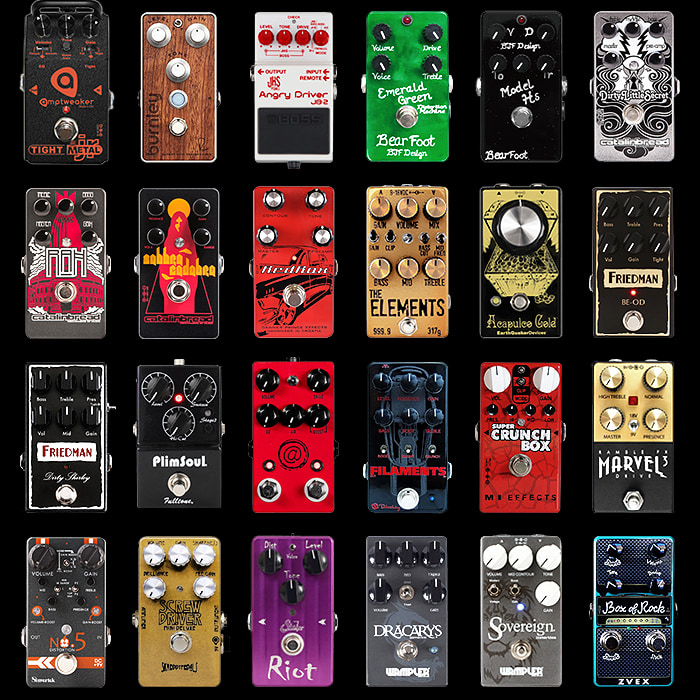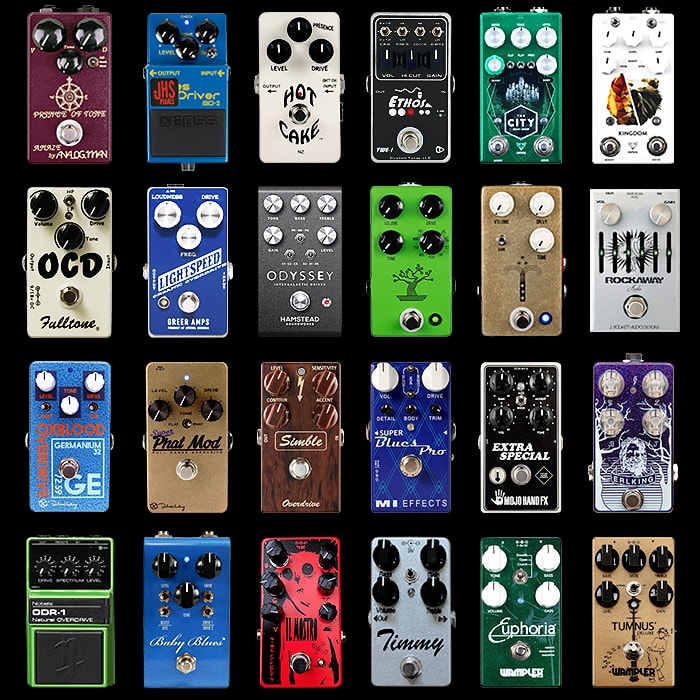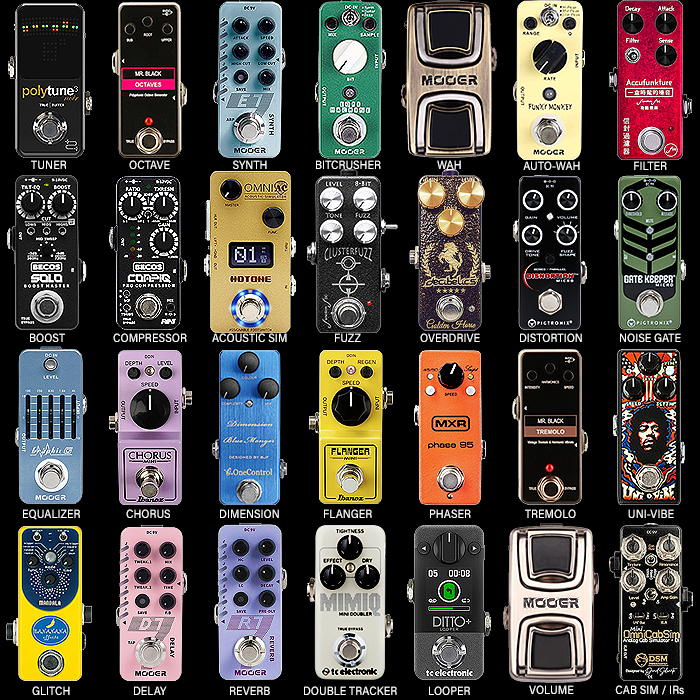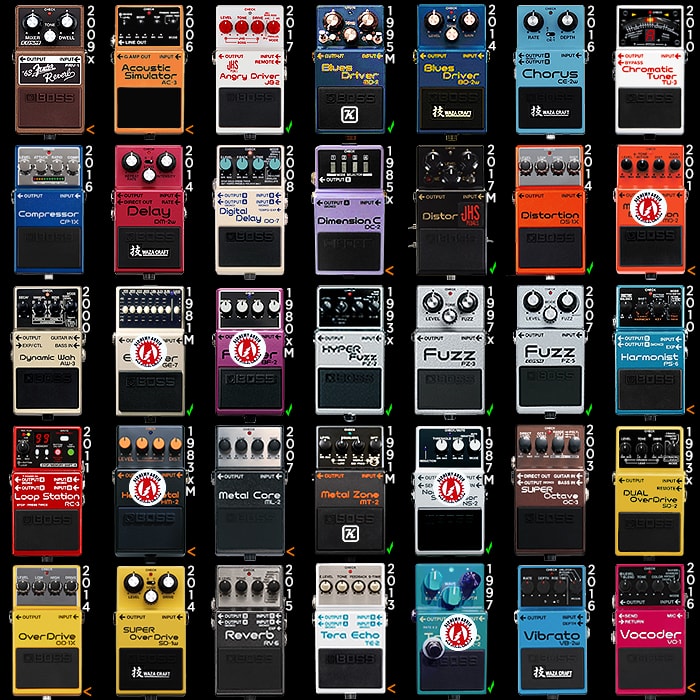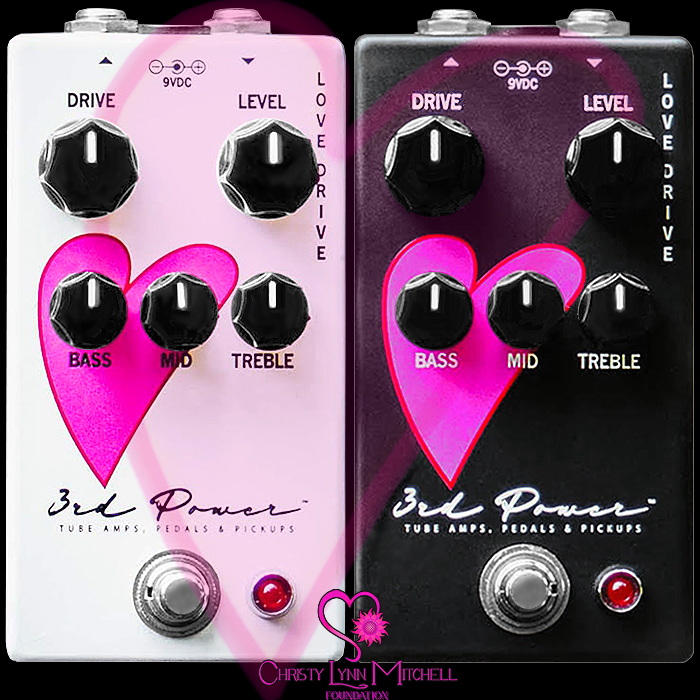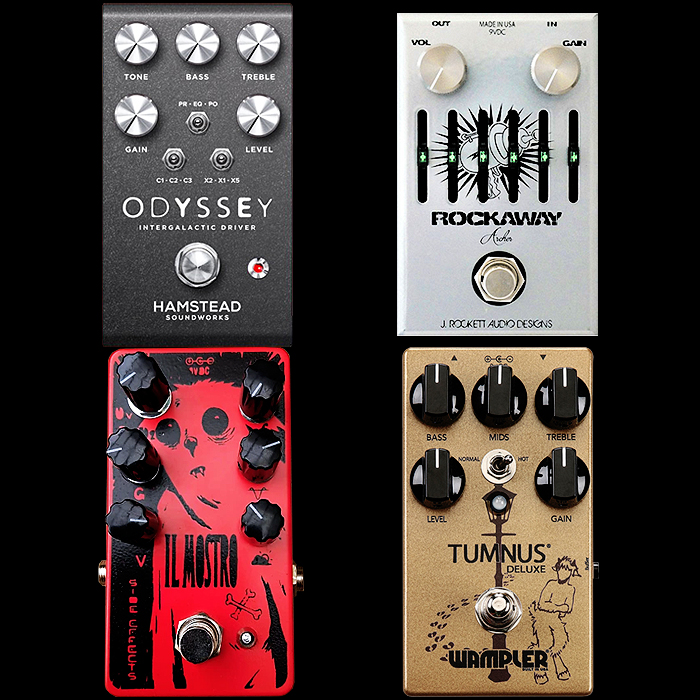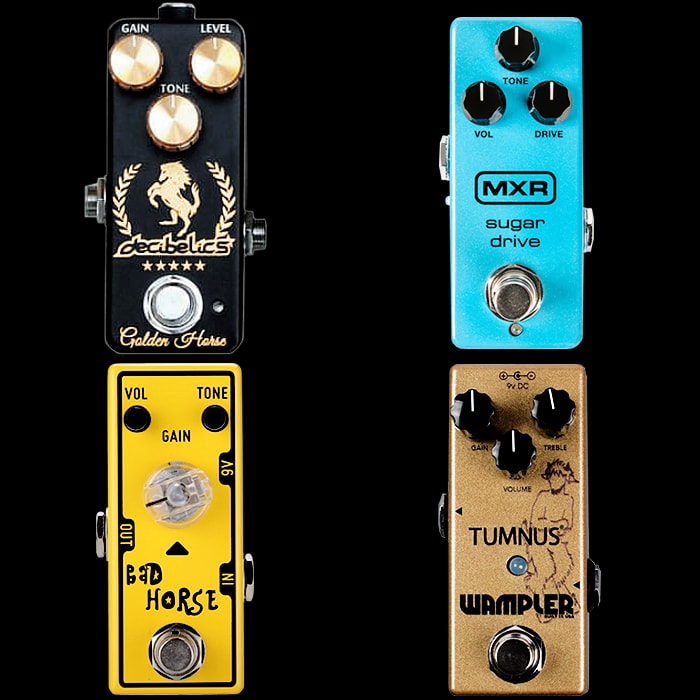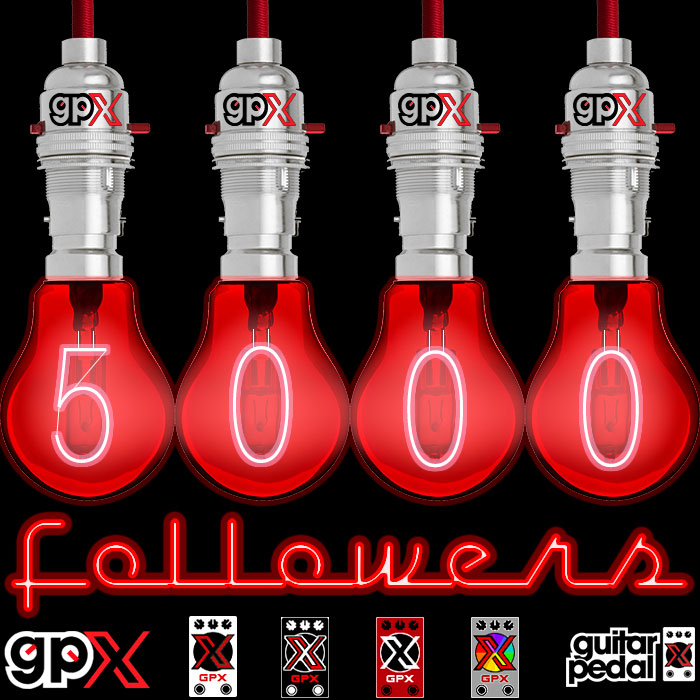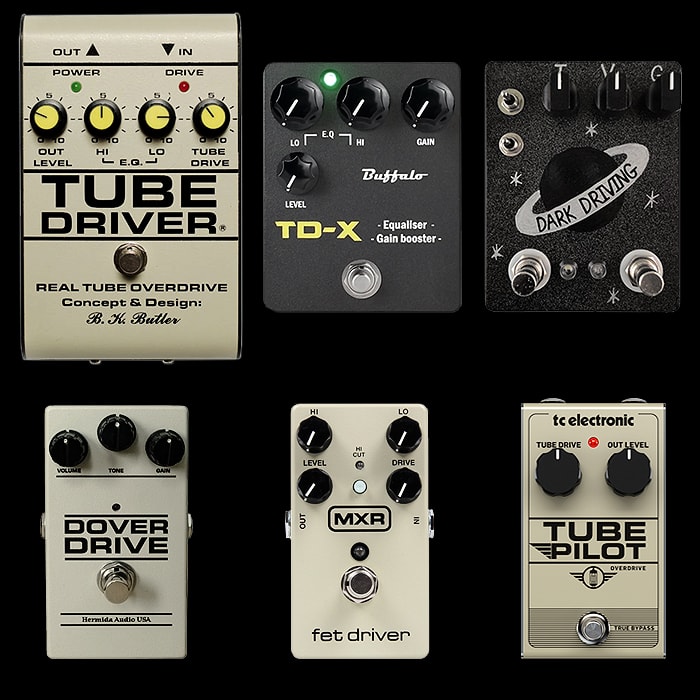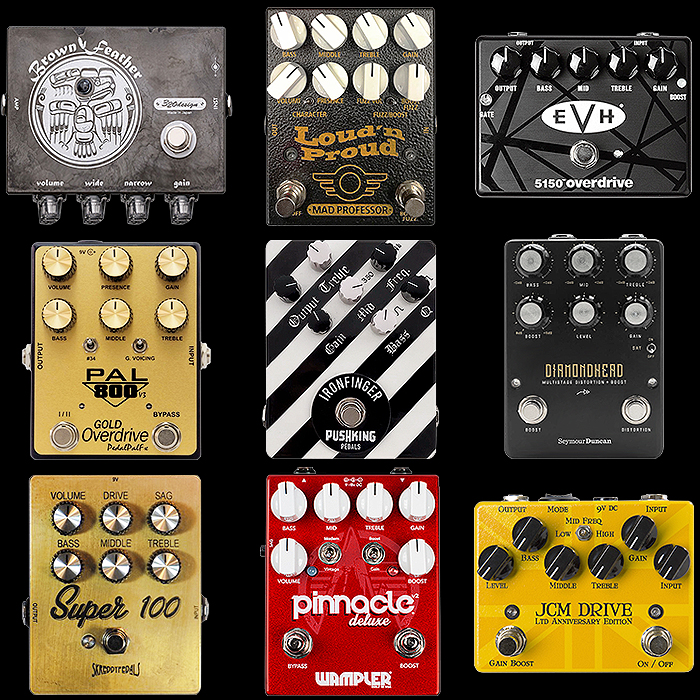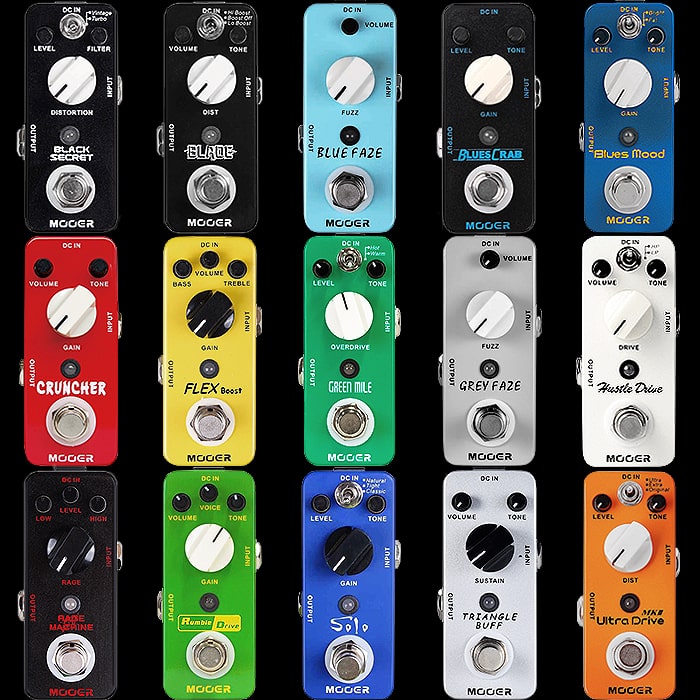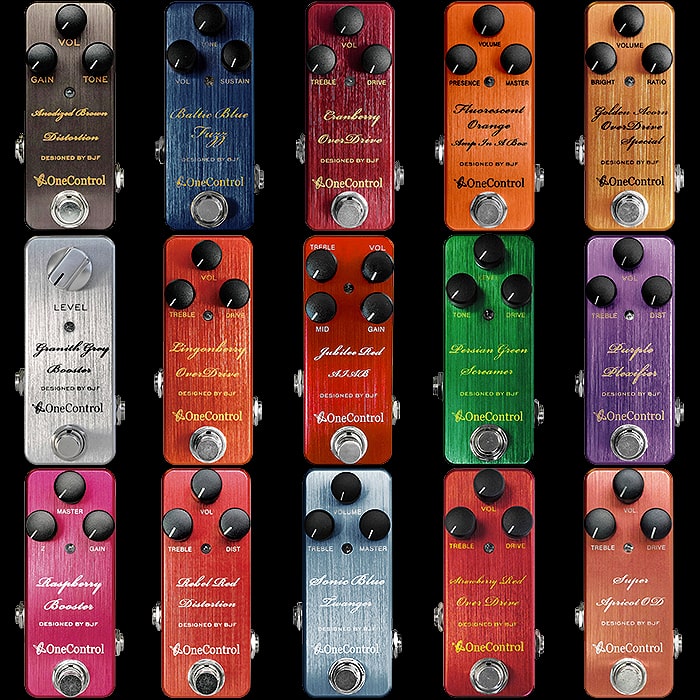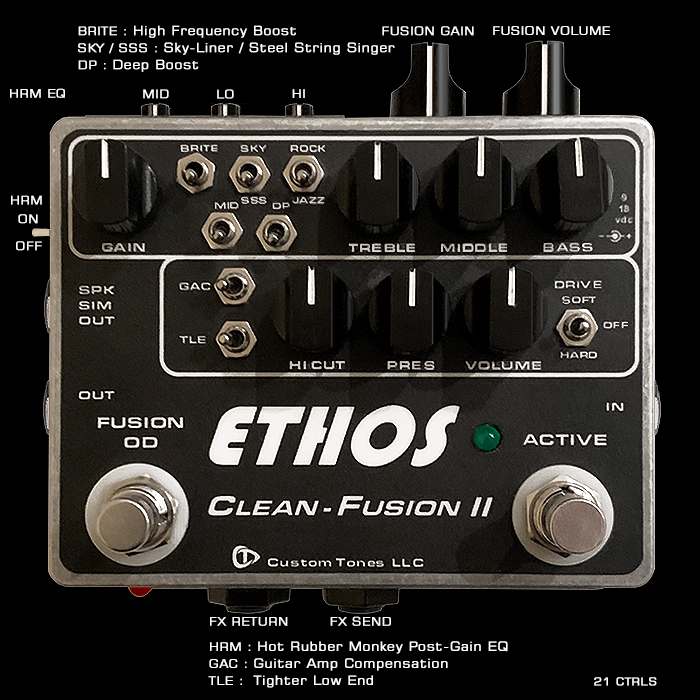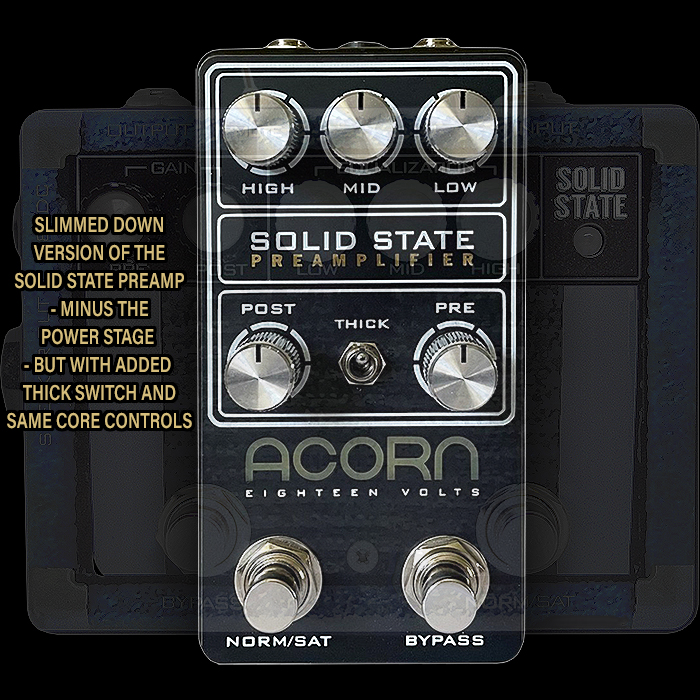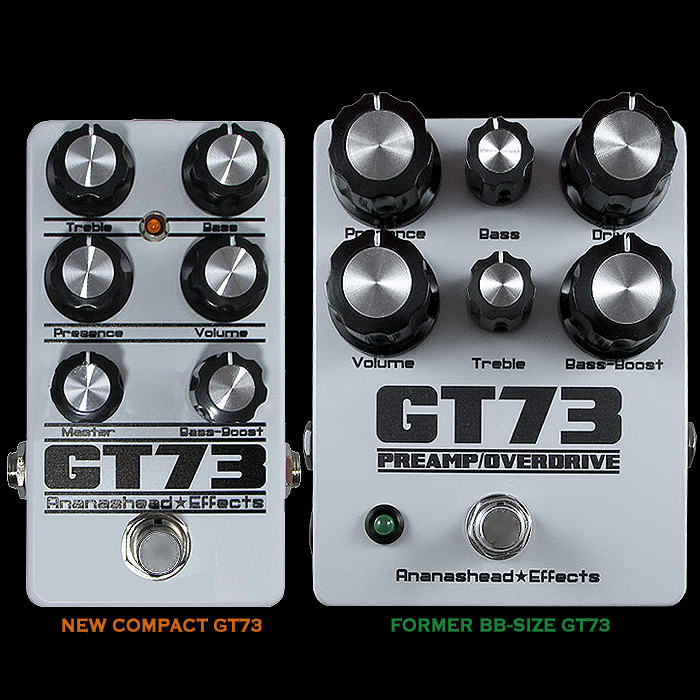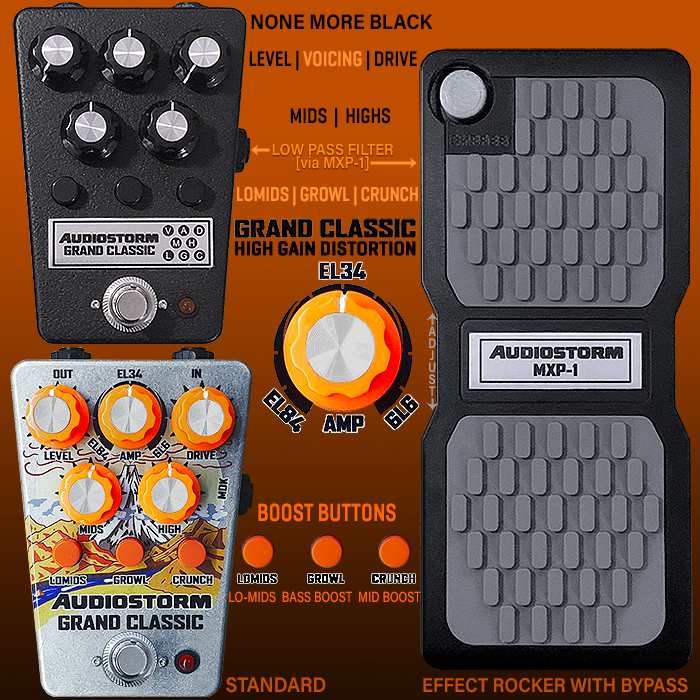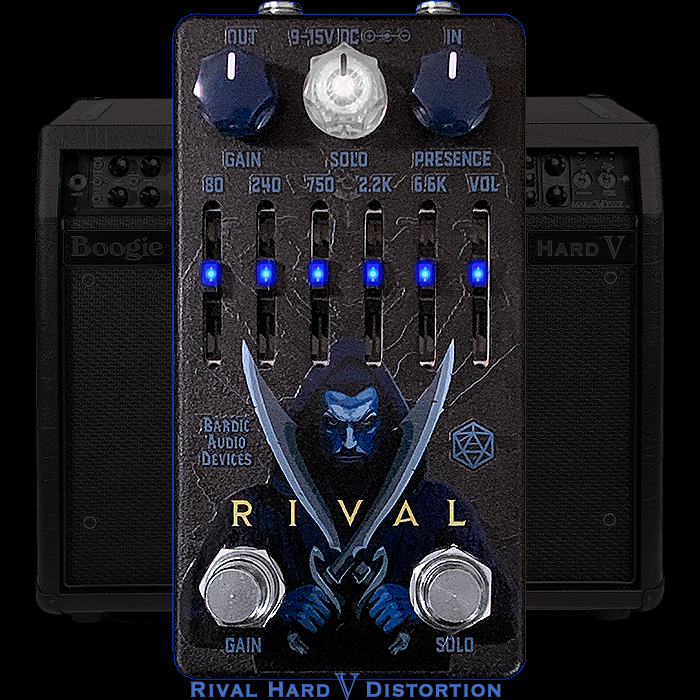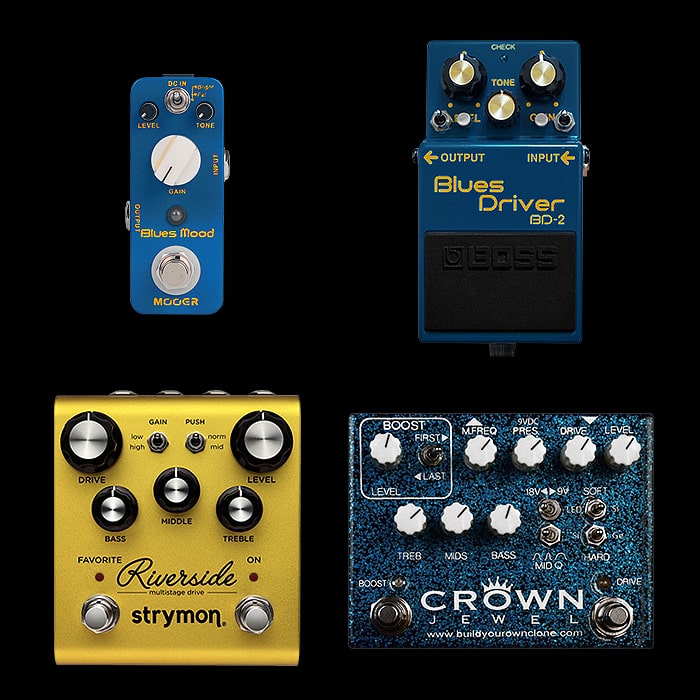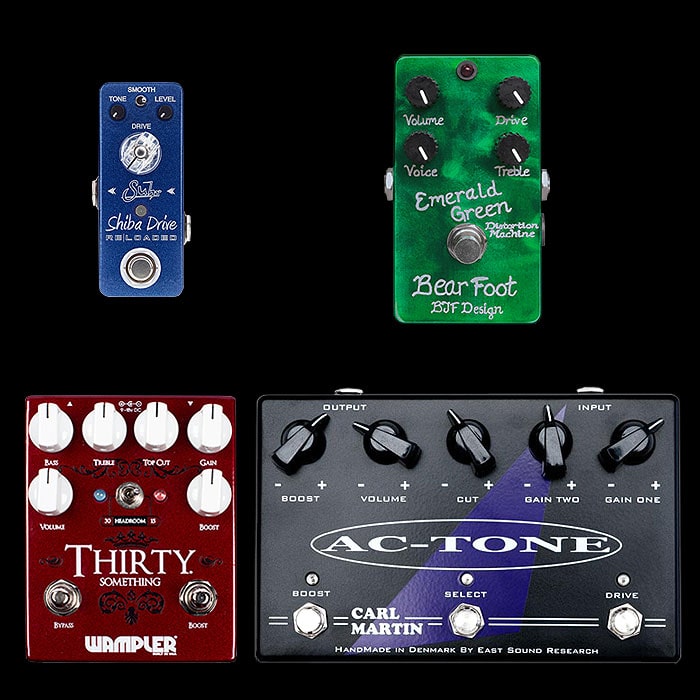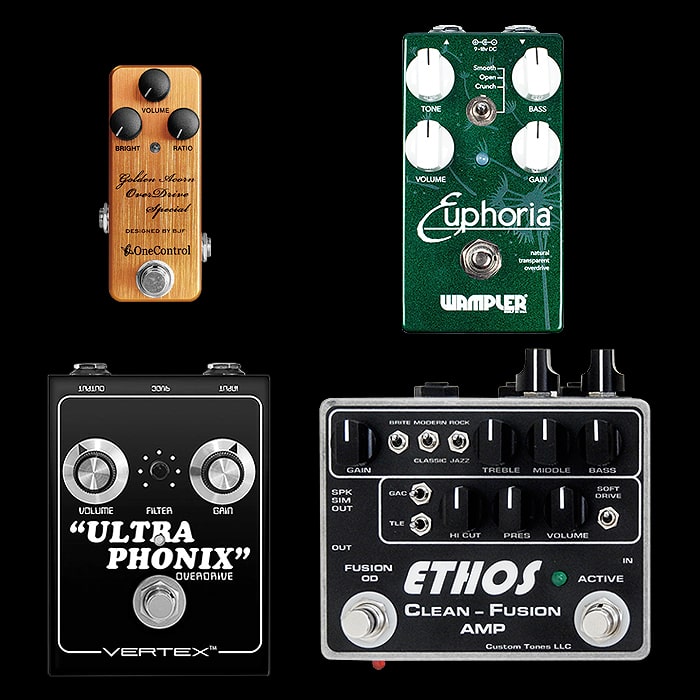Which are the Best of the Mooer Micro PreAmp Pedals?
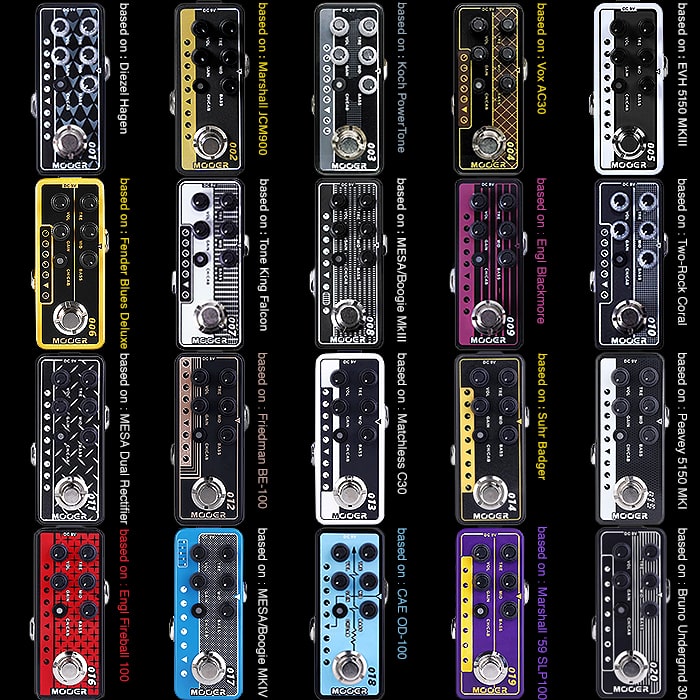
With the last couple of pedals in the series due to be released this week in theory, I thought it opportune to do a proper overview of the Mooer Micro PreAmp series / range. I am a fan of Mooer pedals in general and have a handful in my collection - albeit none in the current active pedal-chain, but I have always been really impressed with the Black Secret, Blues Mood, E-Lady, Hustle Drive and Trelicopter in particular. In any case, when these pedals were first released there was a slew of just really sloppy demo videos on YouTube - which did these new pedals no favours and in fact somewhat put me off. It’s only relatively recently that I’ve come around to appreciating these for what they can deliver.
They occupy the same overall dimension as the usual Mooer Mini Pedals, but have 5 dials and a mode push-button switch along with the usual single footswitch. The 5 dials are full 3-band EQ blues Volume and Gain, the mode switch allows you to switch between the two channel modes - i.e. Blue/Red or Clean/Driven; the same switch when held down also activates the onboard cab sim if you need it - this is the same for all 20 pedals in the range.
Generally these pedals cover largely fairly exotic and many discontinued boutique amps - yet a handful of classics too. I’m not familiar with all of the original amp inspirations, but I know a reasonable number of these. It has to be said that the simulation / modelling is pretty faithful and each one of these distinctly has the flavour of its particular inspiration amp. As to how close the simulation is - is up to you to decide. I personally don’t get too hung up on the degree of authenticity - I’m really just interested if there is sufficient flavour there and if I can get it to sound good for me. For each of these amps there is a variance in the degree of how much range is captured and how well the pedal suits its larger context. As an example, the 004 Day Tripper AC30-style model is well suited to chimey Beatles and U2 Edge tones, but does not go quite saturated enough to cover the full Brian May experience. I expect this is true to a degree with most of these pedals - as is always the case when you’re trying to cover a highly complex multi-channel amp in a single pedal.
In any case, Mooer released the original batch of 10 at the start of 2017 - and for a variety of reasons we have suffered some name changes in the interim for legal and other reasons - the full up-to-date list is as follows - as long as you go by the model number you should be fine when hunting down older pedals:
- 001 Gas Station : based on Diezel Hagen
- 002 UK Gold 900 : based on Marshall JCM900
- 003 Power-Zone : based on Koch PowerTone
- 004 Day Tripper : based on Vox AC30
- 005 Brown Sound 3 : based on EVH 5150 MKIII
- 006 US Classic Deluxe : based on Fender Blues Deluxe
- 007 Regal Tone : based on Tone King Falcon
- 008 Cali-MK 3 : based on MESA/Boogie Mark III
- 009 Blacknight : based on Engl Blackmore
- 010 TwoStones : based on Two-Rock Coral
- 011 Cali-Dual : based on MESA/Boogie Dual Rectifier
- 012 US Gold 100 : based on Friedman Brown Eye 100
- 013 Matchbox : based on Matchless C30
- 014 Taxidea Taxus : based on Suhr Badger
- 015 Brown Sound : based on Peavey 5150 MKI
- 016 Phoenix : based on Engl Fireball 100
- 017 Cali-MKIV : based on MESA/Boogie Mark IV
- 018 Custom 100 : based on CAE OD-100 (Custom Audio Electronics)
- 019 UK Gold PLX : based on 1959 Marshall Super Lead Plexi 100
- 020 Bluneno : based on Bruno Underground 30
The Brett Kingman Demos
As stated above - I encountered a lot of rather squiffy demos initially which very much put me off these pedals. Even though I pretty avidly follow Brett Kingman, I somehow initially missed his exemplary demos per this video which really gives you a proper account of their capabilities - I guess I had given up on them by then!
In any case, as long as you're onboard with their strengths and weaknesses these pedals really do acquit themselves commendably, and even though there are no exactly poor ones here, there are of course some which shine more than others. I actually did a lot of this exercise in preparation form my recent Mini, Compact, Medium and Large series of preferred pedals - and in those overview I touched on several of these - including both Brown Sounds - 005 & 015, the 006 US Classic Deluxe, and 011 Cali-Dual and 012 US Gold 100. There are a number of original amps referenced here that I had never heard before, in fact some I'd never heard of - Bruno Underground 30 - anyone?
So as I said before - it's impossible to judge these fully within context and against each of the original amps unless you somehow have access to all of these - I think some you can recall as faithful reproductions of well-known tones, while for others it's just a matter of preference - if you like that sort of tone and timbre.
I already have a number of favourites, but will try to approach the exercise from a pretty neutral perspective to see if I can discover a few more favourites along the way and draw some sort of conclusions and recommendations at the end. As always I try to find the best demo videos which best get across the true nature and potential of each pedal in question.
Note that I'm typically less bothered by the clean tones - it's really drive and distortion where I am the happiest - and I think that will likely be the case for most who use these pedals.
Pedals obviously listed in order of model number:
001 Gas Station (Diezel Hagen) - £75
Not sure why Mooer would select the Hagen over say the more celebrated VH4 - but I guess it's a good move as number 001 gets the series off to a great start. I think I personally prefer the extra sizzle of the VH4 - but there's no doubting that the Diezel tone DNA is evident in this pedal - this one's a win for me!
002 UK Gold 900 (Marshall JCM900) - £75
Most are familiar with the sound of a Marshall JCM800/900 and you can quite quickly detect that classic Marshall tonality in the above admittedly exceptional demo. So far it's a two for two!
003 Power-Zone (Koch PowerTone) - £77
So this is the first one I have no existing benchmark for. I'm not that familiar with Koch amps at all apart from demos of the recent Greg Koch signature model. Therefore off the cuff I have no idea which of the key origination amps this amp derives from - Fender/Marshall/Vox - and what exactly it is supposed to sound like. Upon audition, this seems to be the first in which I can detect a hint of the digital in the edge of its driven mode. A very pleasant mid range overdrive with nice warm harmonics, but I'm detecting some sort of digital artefact in the tone - which I did not get with the previous two. Perhaps I'm just imagining that - it sounds eminently pleasant enough - I'm not sure this one has enough about it to win me over though - we'll do a soft pass on this one therefore.
004 Day Tripper (Vox AC30) - £75
This surely has extra appeal for Beatles fans as it covers those chimey tones pretty well. It also covers most of what U2's The Edge uses the originating amp for as far as I recall, but really just touches on the Brian May treble-boosted thing - its range is insufficient to properly cover those Queen tones. I wrongly included this pedal in a previous Top-Boosted Vox overview, while the second time around I selected the wholly unintentional Suhr Mini Shiba Drive Reloaded. As per Jason's above review - the Mooer works far better for the cleanish types of tones, but you're best of being on the drive channel with your guitar volume dialled back a bit to get reasonable amounts of that Vox-style chime. I feel this is a decent proposition for those more after chimey Vox cleans - while Brian May fans like me will need to make do with the Mini Shiba Drive at this enclosure size.
005 Brown Sound 3 (EVH 5150 MKIII) - £77
Initially known as the Fifty-Fifty 3 but renamed to Brown Sound 3 more recently - I've already covered this one before a few times. It's obviously one of the stars in the range and is also testament to just how many metal players still use Eddie's core sound as their own metal foundation sound. The best demo of this I've found to date is Cradle of Filth's visit to Thomann per the above - the actual playing is mostly towards the end of that video. I really don't think you can go wrong with the 5150 sound - it's one of my favourite distortion tones, and I could quite happily play with this.
UPDATE! I actually found 2 great demos of the 005 Brown Sound pedal.
I felt I should include the above also to show why so many players are taking to using this particular pedal.
006 US Classic Deluxe (Fender Blues Deluxe) - £73
I already covered this in my 4 enclosure sizes overview where I named this as my mini 'Tweed' pedal of choice. It sounds quite brilliant in Brett Kingman's above demo - and has just the right amount of twang to make you fully satisfied. I've grown into a huge fan of the twangy Tweed sound which was key to a lot of the early Rock 'N' Roll. Nowadays you're more likely to find country-style musicians utilising this highly articulate tone, but it is definitely one of my favourite drive tones - and this pedal recreates is extremely satisfactorily - I really like this one!
007 Regal Tone : based on Tone King Falcon - £77
I have little prior knowledge of Tone King amps - so I've no idea how this particular model is supposed to sound. It sounds pretty pleasant to my ears - particularly when it's driven. I'm not sure it's a tone I really need in my chain or in my collection. I'm not sure it does anything significantly different to several of my highly capable overdrive pedals. For sure it has a nice character, but I would probably pass on this one too, not that there is anything in the slightest actually wrong with it - it just does not particularly stand out for me.
008 Cali-MK 3 (MESA/Boogie Mark III) - £77
I'm a big fan of the Mesa Mark series of amps and have long fancied a Mark V version or derivations thereof - like the slightly more controllable output of the Express Plus diffusion series (recently discontinued). In any case the Mooer does an excellent job of capturing that Core Mesa Tone in its various guises per the superb Bart Planting demo above - it really suits having a Tube Screamer to boost it too! I would definitely spring for one of these - it sounds great.
009 Blacknight (Engl Blackmore) - £77
Richie Blackmore's signature amp is obviously a fairly well known quantity and a replica of that sound should be easy enough to gauge. The above short demo offers great evidence as to the proficiency of the pedal on delivering that very well known core sound. I've got to say it's another winner really - I feel that the higher saturated distortions are really the forte of these PreAmp pedals - where in parts of the clean delivery they might inadvertently betray some of their digital roots - as I've only found evident so far on the 003 Power-Zone - but there may be other factors to that. Generally there are lots of high gain and metal players who are taking the digital route - admittedly still mostly Axe-FX, Kemper and Helix, but now increasingly there are some using these Micro PreAmps too - and I can totally see and hear the appeal!
010 Two Stones (Two-Rock Coral) - £75
Two-Rock is an amp brand I don't have a lot of familiarity with - of course I have heard That Pedal Show Mick Taylor's Classic Reverb Signature, as well as the Dumble-esque tones of the TS1 model. The Coral model though I have no familiarity with as such. To my ears I do detect a hint of the Dumble in this pedal - although something seems a touch off in the sustain of that tone. Generally it's a really pleasant sounding pedal with that beautiful edge texture on the drive tones - it sounds fine with chords, but I'm detecting a certain something on the individual notes - some sort of tiny indistinct textural artefact. Strange one really as I should really rather like this one - as a big fan of the core Dumble sound which many of the Two-Rocks are modelled on a to a degree. It's a nice enough pedal really, but there's something about it which niggles me - I'm struggling to describe exactly what - just something ever so slightly off about the texture and timbre of those single notes.
011 Cali-Dual (MESA/Boogie Dual Rectifier) - £77
I generally love the MESA/Boogie Dual / Triple Rectifier sound, and see it as one of the key core high gain distortion tones. This pedal though seems to have met with somewhat mixed reviews - I guess some aren't that keen on that core Mesa frequency cluster which is somewhat light on low-end frequencies. I feel the Musiker demo guy though nails the sound at around the 5 minute mark of the above demo. There will be many who prefer the sound of the US Gold 100 (Friedman BE-100) also in said video - and which does have more in the low register. I would though use those two tones somewhat differently, and I actually really like both. It seems the Cali-Dual though needs some careful attention with the EQ settings.
012 US Gold 100 (Friedman Brown Eye 100) - £77
I featured both this and the previous 011 in my recent High Gain 4 pedal overviews and I really liked the tones of both - even though most seem to prefer this pedal to the Cali-Dual (Dual Rectifier). This was originally called the Fried Mien pedal, but has since changed to US Gold 100. I of course have and love the Friedman BE-OD pedal and this is more of the same - albeit with the full 3-band EQ that I was requesting on the Friedman pedal in the same article I think. The US Gold 100 has the bass frequencies that are largely absent from the Cali-Dual, but it also has less of the mid-push which constitutes a significant part of the sound of the former. This is a more rounded distortion and likely to have broader appeal - it does really well at capturing the Brown Eye profile - particularly at full gain - where it sounds immense.
013 Matchbox (Matchless C30) - £77
Another brand that I have absolutely no experience of and no markers in place for. I'm not sure where to place this - it has pretty decent range and gets nicely into driven mid gain territory. A lot of the demos I encountered are distinctly 'indie rock' but then I come across someone playing funk licks with the pedal - so obviously it has a degree of versatility. I'm onboard with core tone - and per the Musiker demo above it has a nice singing quality for medium gain lead lines which make it pretty appealing - I'm not sure though what specifically separates this amp out from the others - it does not seem to have a particularly unique and distinct identity that I can detect. I quite like it, but don't really need it, and am not entirely sure I would use it within the scope of all my other pedals - it would help if I knew what music this was best associated with - which alas I do not - perhaps someone would care to illuminate?
014 Taxidea Taxus (Suhr Badger) - £77
As a pretty firm follower of Pete Thorn I am familiar with most of what Suhr put out, but don't have a particular memory of his using the Badger Amp. The Badger is supposed to be Suhr's take on the original Marshall amp - the JTM45 or so I'm led to believe - so I went into this expecting to hear some distinct Marshall DNA in those tones. And yes it pretty much delivers that lovely chewy sort of Plexi tone that most players love so well. I'm fan of all the different Marshall tones - right across the gain spectrum - so this is an easy shoe-in for me - it sounds excellent - per the short and sweet Musiker demo above.
015 Brown Sound (Peavey 5150 MKI) - £77
Interestingly this takes us back to the original EVH Peavey sourced and original James Brown created 5150 amp which is what was utilised towards the earlier part of Eddie's career - vs the latter-day EVH Gear Versions which are currently in circulation. The first Brown Sound amp type that Mooer released - the 005 was based on the later EVH 5150 MKIII amp, while this later 015 Mooer Brown Sound is based on the very first / original Peavey one. That said, I believe Eddie still used his variac-attenuated Marshall on his earliest and most seminal works. Not sure why Mooer would need to release both - or why you would actually need both. Both sound tremendous, although I believe the earlier 005 MKIII one has a touch more gain on tap and a slightly different / looser compression / headroom profile. I think I probably prefer the 015, while metal players might get more range and utility out of the 005.
016 Phoenix (Engl Fireball 100) - £77
There aren't many demos out yet on this Engl Fireball inspired PreAmp clone - and the Mooer demos are somewhat universally lacklustre. Lucky then that Guitar Bonedo are able to give us a more accurate gauge of this pedal's potential - which yes seems to replicate Engl's core tone DNA pretty well on the Distortion Channel. This is another sufficiently different metal voicing that is worth having - it is significantly different to the Engl Blackmore Blacknight clone - and runs closer in profile to the Diezel Hagen clone or the 001 Gas Station - while I while each is sufficiently distinct to warrant separate inclusion - while you're likely to me more in the Diezel or Engl camp. I personally am more in the Diezel camp generally, but have an appreciation for Engl's Powerball style amps too - which are not a million miles away from the slightly more raw and full-on Fireball.
017 Cali-MKIV (MESA/Boogie Mark IV) - £77
I am most familiar with the MESA MKII (Petrucci) and MKV amps - I simply assume the MKIII and MKIV were steps in the evolution but still largely retain that same core tone. Here Mooer brings us a replica of the MKIV variant - I'm not clear why Mooer would really need do the III and IV in place of another wholly distinct rare amp. Alas for this model we only have the somewhat pedestrian Mooer demo to go from - but the pedal aquits itself pretty well here. I am not entirely clear on the distinct nuances in the difference of the two Mooer Mesa Mark pedals, but my understanding is that the Mark series has gotten progressively more modern as it has evolved - meaning a higher gain, brighter and more aggressive sound generally. As a MESA/Boogie fan I already love the origin DNA, and this pedal sounds good enough to me, although I'm not 100% clear yet on how distinct this one is from the earlier MKIII Mooer 008 model.
018 Custom 100 (CAE OD-100 (Custom Audio Electronics)) - £77
My understanding is that the CAE OD-100 was designed to combine the best of Fender Black Face style cleans with the best of Marshall style drive and distortion - and I guess that's what you're getting here. There's not a whole heap of demos around for this one, but the gist seems to be Fender Cleans + Marshall-esque Drive. I personally have no issue with Marshall style cleans, but am likely more of a Vox-style chimey cleans plus Marshal style distortion sort of player - oh and of course give me some lovely treble-boosted Vox distortion and some EVH Brown style distortion too - that would make the perfect amp!
019 (1959 Marshall Super Lead Plexi 100) - c£80 on Reverb.com
This has sort of been announced for release on w/c 12th of November - i.e. this week. Music Express Canada has one up for pre-order on Reverb.com with estimated shipping date of the 16th - we're just waiting for the official Mooer demos to go live and we will update. We all pretty much know how good a Plexi can sound - we just need to see how close Mooer's version goes - after reviewing all these, I don't doubt that it will do rather nicely.
020 Bluneno (Bruno Underground 30) - c£80 on Reverb.com
Same status on this one as for #019 - mooted for release this week and awaiting demo video. Mooer has made a very odd choice for the final amp in their series - a very little known amp at least to me. It's based on EL84 tubes and bosts chimey, sparkly cleans - so very much towards the Vox side of things by the sound of it. The only demos I can find of this amp are of clean and fairly low gain overdrive, so I'm not really clear on the range of this and what it's advantages are versus the Vox-style 004 Day Tripper - I guess time will tell!
Note that demo video is same as for #019 - Mooer combined the two!
Final Thoughts
I think these pedals are an interesting proposition, and I would wager a rather large stake that it's the better known distortion-based ones that are shifting the units. Increasingly home players go for 'Pedal Platform' clean channel solutions - like I do in fact. I use two amps, a Katana 100 and an all-valve Carvin V3MC in stereo and use a a variety of boost pedals plus Alchemy Audio modded Boss EQ to give me my core / base chimey clean channel (Vox-like) which I build everything on top of. I think the vast majority of interest is in the distortion channels - and there are actually professional players who utilise the Brown Sound variants for instance for their core touring tone / rig. Most cover-band types I've met are more likely to use the Helix or similar, while those proper finger-style muso-types will use a proper valve amp for their cleans. So I'm not sure exactly whom those cleaner type PreAmps are exactly aimed at.
It's interesting that we have the Synergy Amps Analogue Modular approach alongside Mooer's tiny digital PreAmps offering - the idea for both being the ease of assembling lots of different flavours effectively and efficiently. And while I think the Synergy Amp/s are more of a studio tool really, the tiny Mooer Micro PreAmps seem to be perfect for low maintenance touring. My understanding from those players is that they want their particular flavour of PreAmp plus Radar plus Baby Bomb amp stage in one relatively tiny enclosure. To which ends Mooer already has the GE series - which is sort of morphing into Helix-like territory where the touring players probably need something quite a bit simpler, but still smaller than the recent Mooer Pre Amp Live - in any case all steps in the right direction.
Where I stand in all of this I'm not quite sure. Yes I am a fan of Mooer mini pedals, and yes I like the form factor of these Micro PreAmps, but I already have most of my favourite key flavours already active in my rig. I would probably still much rather have the Wampler Triple Wreck for instance probably than the Mooer Cali-Dual. But I am home-studio based with no touring requirements. I would love to know exactly whom Mooer had in mind when they launched their Micro PreAmp range as the High Gain touring musician seems to be somewhat the key demographic currently. Obviously a number of these have been snapped up for home use too - would be interesting to see the stats on what are the best sellers, and which are failing to convince.
I have stated that I already have an inkling about which the more popular varieties are likely to be - and we will discover eventually by which models get discontinued first. Obviously sales of the first series of 10 were sufficient to trigger the next batch of 10, but I still contend that some of these choices are highly risky - and that they should probably rather have gone with a more Brian May style rather than Beatles-style Vox - yet there do seem to be fans of that too.
Donner has followed Mooer with a fledgling range of similar mini PreAmps - although those don't appear to have been as well received. I'm not entirely sure I specifically want or need any of these particularly - those little dials can be a touch fiddly, and difficult to gauge from a distance - which is one of the key advantages of using physical analogue pedals. If I were to pick my favourite 5 they would likely be:
- 002 UK Gold 900
- 006 US Classic Deluxe
- 011 Cali-Dual
- 012 US Gold 100
- 015 Brown Sound
As to which of those I will actually eventually acquire - I'm really not sure - none of those are on any of my wishlists yet!
Pricing!
I've noticed quite a difference in the pricing of these pedals - ranging from as little as £50, to as much as £99 in the UK - while Thomann seems to have them pretty consistently at around £77.
If you shop around, you can get some of these at pretty much bargain prices - I guess particularly those pedals which suffered a name change or have not managed to gain a loyal following. Seems a sufficient number of those first batch of 10 pedals have been somewhat left on the shelf for certain vendors.



















